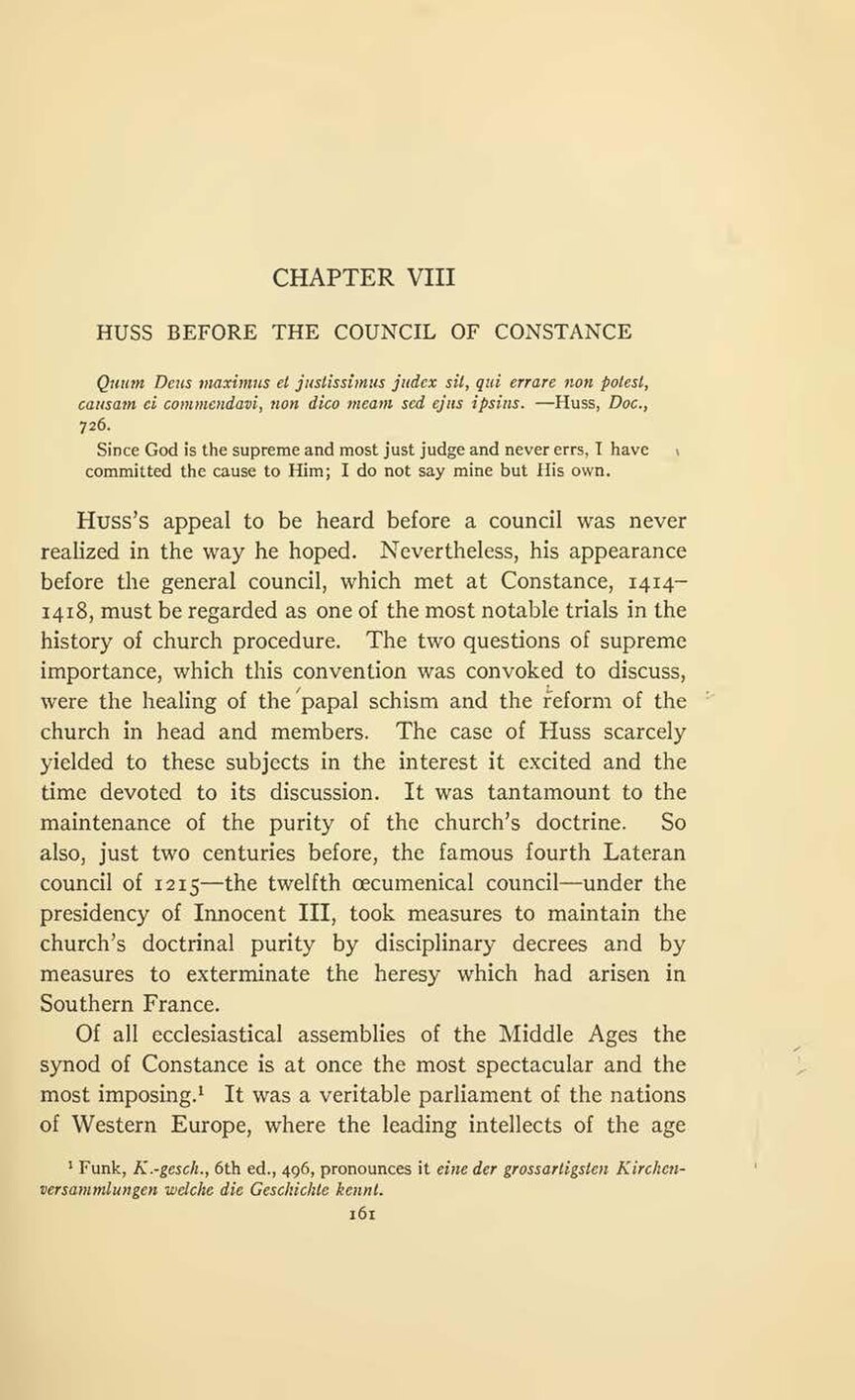CHAPTER VIII
HUSS BEFORE THE COUNCIL OF CONSTANCE
Quum Deus maximus et justissimus judex sit, qui errare non potest, causam ei commendavi, non dico meam sed ejus ipsins.—Huss, Doc., 726.
Since God is the supreme and most just judge and never errs, I have committed the cause to Him; I do not say mine but His own.
Huss’s appeal to be heard before a council was never realized in the way he hoped. Nevertheless, his appearance before the general council, which met at Constance, 1414–1418, must be regarded as one of the most notable trials in the history of church procedure. The two questions of supreme importance, which this convention was convoked to discuss, were the healing of the papal schism and the reform of the church in head and members. The case of Huss scarcely yielded to these subjects in the interest it excited and the time devoted to its discussion. It was tantamount to the maintenance of the purity of the church’s doctrine. So also, just two centuries before, the famous fourth Lateran council of 1215—the twelfth œcumenical council—under the presidency of Innocent III, took measures to maintain the church’s doctrinal purity by disciplinary decrees and by measures to exterminate the heresy which had arisen in Southern France.
Of all ecclesiastical assemblies of the Middle Ages the synod of Constance is at once the most spectacular and the most imposing.[1] It was a veritable parliament of the nations of Western Europe, where the leading intellects of the age
- ↑ Funk, K.-gesch., 6th ed., 496, pronounces it eine der grossartigsten Kirchenversammlungen welche die Geschichte kennt.
161
